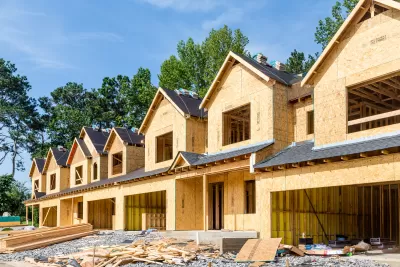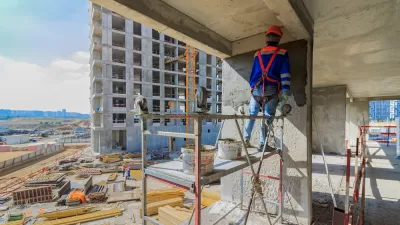An analysis of 12 U.S. cities found that new market-rate construction often leads to more affordable units becoming available, but the effect varies across housing markets.

A new study from the Federal Bank Reserve of Minneapolis shows that the construction of market-rate housing units leads to more available affordable housing units. Writing in BisNow, Kayla Carmicheal outlines the results of the study, which analyzed renter moves in 12 U.S. metro areas. “When high-income residents move into new market-rate housing, their previous homes are freed up for other renters or homebuyers. When those residents move, their old place is then available for others and the price on it may lower because of a shift in demand. This process is known as filtering.”
The study contributes to an ongoing debate over what policies are most effective in improving housing affordability and making more housing available to renters and homeowners alike. While some policies offer rental assistance and tax incentives for affordable housing developers, others can improve the overall building climate and boost the housing supply by streamlining permit processes and updating zoning regulations to meet today’s needs.
Carmicheal notes that filtering doesn’t occur evenly across cities. The study “found that the Minneapolis-St. Paul metro has a high rate of filtering, with nearly 0.6 affordable units opening up for every new market-rate unit, while New York City has a below-average rate of less than 0.2 units freed per new build.” Meanwhile, “When there are fewer homes available but high demand, older homes that used to be accessible to first-time home buyers are more likely to be snagged by higher-income residents over time,” amounting to a reverse effect and, in some cases, the displacement of older residents and the gentrification of previously low-income neighborhoods.
FULL STORY: Market-Rate Construction Frees Up More Affordable Homes, Study Finds

Alabama: Trump Terminates Settlements for Black Communities Harmed By Raw Sewage
Trump deemed the landmark civil rights agreement “illegal DEI and environmental justice policy.”

Planetizen Federal Action Tracker
A weekly monitor of how Trump’s orders and actions are impacting planners and planning in America.

The 120 Year Old Tiny Home Villages That Sheltered San Francisco’s Earthquake Refugees
More than a century ago, San Francisco mobilized to house thousands of residents displaced by the 1906 earthquake. Could their strategy offer a model for the present?

In Both Crashes and Crime, Public Transportation is Far Safer than Driving
Contrary to popular assumptions, public transportation has far lower crash and crime rates than automobile travel. For safer communities, improve and encourage transit travel.

Report: Zoning Reforms Should Complement Nashville’s Ambitious Transit Plan
Without reform, restrictive zoning codes will limit the impact of the city’s planned transit expansion and could exclude some of the residents who depend on transit the most.

Judge Orders Release of Frozen IRA, IIJA Funding
The decision is a victory for environmental groups who charged that freezing funds for critical infrastructure and disaster response programs caused “real and irreparable harm” to communities.
Urban Design for Planners 1: Software Tools
This six-course series explores essential urban design concepts using open source software and equips planners with the tools they need to participate fully in the urban design process.
Planning for Universal Design
Learn the tools for implementing Universal Design in planning regulations.
Jessamine County Fiscal Court
Caltrans
Institute for Housing and Urban Development Studies (IHS)
City of Grandview
Harvard GSD Executive Education
Toledo-Lucas County Plan Commissions
Salt Lake City
NYU Wagner Graduate School of Public Service





























